Looking for a cool hanging houseplant to spruce up your home?
I’ve got just the thing for you: Rhipsalis, also known as the mistletoe cactus or coral cactus. These beautiful cacti can grow incredibly long stems that spill over the edge of their planters, making for a fantastically dramatic effect. The genus has a whole bunch of different species, so there’s bound to be a Rhipsalis that’s right for you.
Keep reading to find out everything you need to know about Rhipsalis care and how to grow a mistletoe cactus in your home.
| Common name(s) | Mistletoe cactus, coral cactus, spaghetti cactus |
| Scientific name | Rhipsalis |
| Family | Cactaceae |
| Height and spread | Up to 6 1/2 feet long and 1 1/2 feet wide |
| Light | Bright indirect |
| Soil type | Rich but well-draining |
| Water | Keep very lightly moist |
Disclosure: If you shop from my article or make a purchase through one of my links, I may receive commissions on some of the products I recommend.
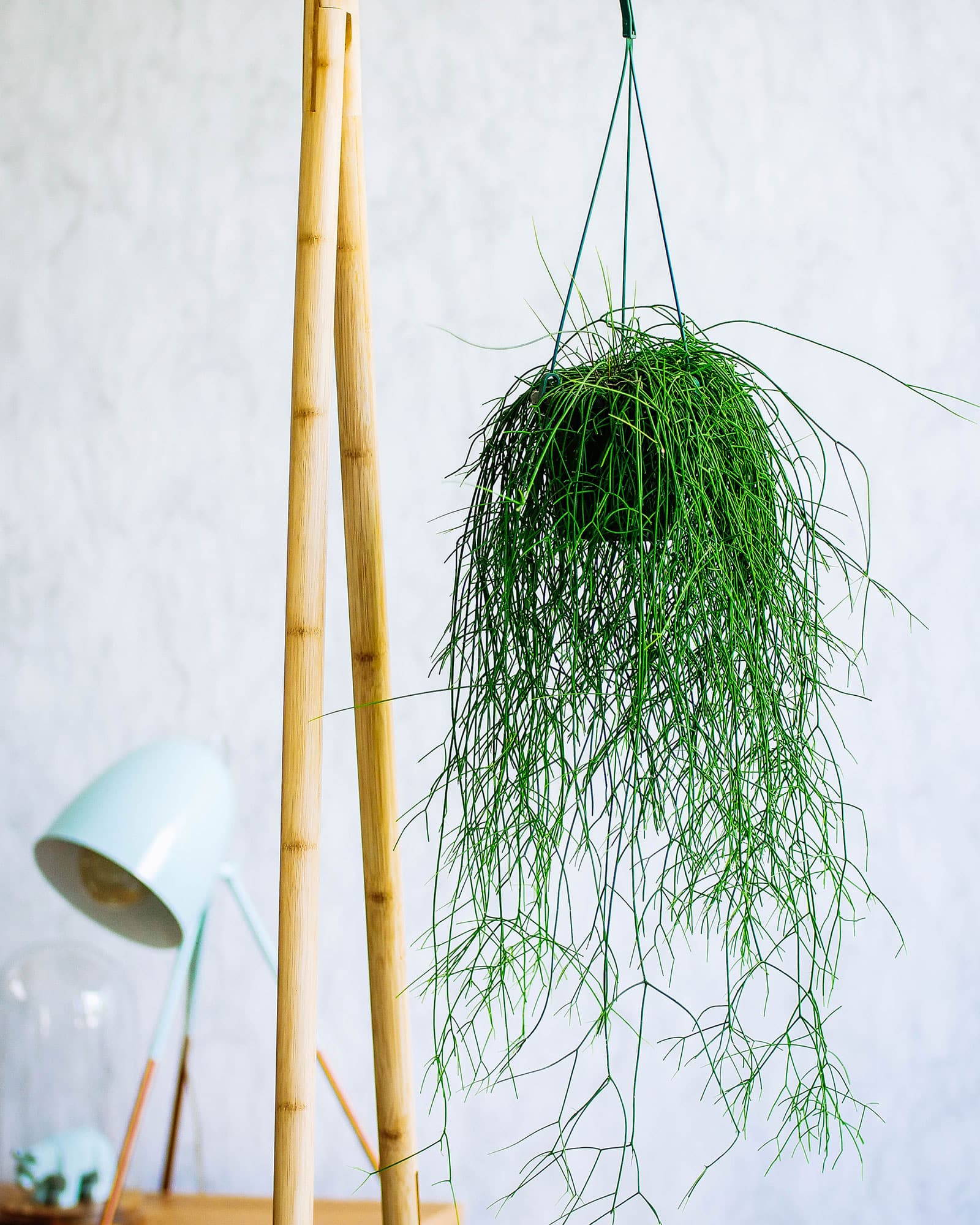
About Rhipsalis
Description
Rhipsalis is a genus of jungle cacti. This special category of cacti doesn’t look much like the classic spiky orb or cylinder, but tends to be much thinner. A lot of them (like Epiphyllum, particularly the popular fishbone cactus) actually have leaves, and few have serious spikes.
Rhipsalis is characterized by its hanging nature. A multitude of segmented stems (the exact appearance of which depends on the species; we’ll get into that below) spills downward and can grow incredibly long. It’s the perfect species for a hanging planter—especially if you expose your plant to a bit of direct sun, which causes the leaves to take on a lovely reddish to orange stress coloring.
Although this cactus doesn’t flower quite as lavishly as some others in the Cactaceae family, the abundance of little white to yellowish blooms it produces are still a lovely bonus. There’s one species with red flowers, called Rhipsalis hoelleri, a relatively rare variety.
Read more: Check out these cactus varieties that have amazing flowers
After the pollinated flowers on a Rhipsalis have withered, little berries will form. These are usually off-white, pastel pink, or bright pink in color.
Did you know?
Rhipsalis berries, like the fruits of a bunch of other cacti, are edible. They’re mildly sweet, although most folks don’t really consider the effort of picking them worth it.
Natural habitat
The members of the genus Rhipsalis are naturally found in Central America, parts of South America and some of the Caribbean. Here, they grow in (sub)tropical rainforests in an epiphytic manner (not unlike Schlumbergera x buckleyi, Hoya kerrii, or Peperomia obtusifolia), using trees as support rather than rooting in the soil.
Combine that with the typical berries and it’s not surprising the genus received the common name of “mistletoe cactus”!
Related: Did you know this is why we kiss under the mistletoe?
Interestingly, Rhipsalis species have also been found in some countries in Africa and Asia. This is quite unsual given that cacti don’t naturally exist outside of the Americas!
It has been theorized that maybe the seeds were spread by migratory birds, although some authors think that human activity is probably a more likely culprit. Or maybe some seeds just floated across the ocean, something that does happen sometimes?
Whatever brought them east, once they were in, their hardy nature made it easy for Rhipsalis cacti to establish themselves in their new home. Rhipsalis baccifera is the most common example of a traveling cactus: It can be found throughout much of the Americas, central to southern Africa, Madagascar and even Sri Lanka.
Unfortunately, some Rhipsalis species are (critically) endangered in their natural habitat. According to the IUCN, all that’s left of Rhipsalis mesembryanthemoides are some “plants growing on trees in public parks,” as the area it grew in has been extensively urbanized.
The same goes for R. pentaptera, whose survival in the wild “depends entirely on the property owners and whether or not they keep the trees on their properties”.

Rhipsalis varieties
When it comes to Rhipsalis cacti, there are enough varieties to keep you busy collecting for a very, very long time. Consider that there are currently 35 recognized species spread across three subgenera (Rhipsalis, Calamorhipsalis, and Erythrorhipsalis). Many of these, in turn, have subspecies.
And then there are all the cultivars and hybrids created by nurseries through selective cultivation and crossing different species… you get my drift.
Here’s a long (though by no means exhaustive) list of the types of Rhipsalis found in the houseplant hobby (some rarer than others):
- Rhipsalis baccifera: By far the most common of the genus when it comes to houseplants, this one is “the” mistletoe cactus. It has stringy, long stems. The ‘Horrida’ subspecies is fuzzy and thick-stemmed.
- Rhipsalis cereuscula: A more compact species with shorter stems, which can produce pretty white flowers.
- Rhipsalis paradoxa: With its thicker, segmented stems, this Rhipsalis is almost reminiscent of a Christmas cactus.
- Rhipsalis pilocarpa: Hairy Rhipsalis alert! This one is known for its pretty white blooms and small, bright pink fruits.
- Rhipsalis burchellii: Another typical many-stemmed Rhipsalis, the tips of R. burchellii turn a bright pinkish-red when exposed to a lot of light.
- Rhipsalis capilliformis: Weeping, thin stems that can grow incredibly dense and long.
- Rhipsalis ewaldiana: This one has thicker, angled stems. A hairy version exists!
- Rhipsalis elliptica: Are we looking at an Epiphyllum oxypetalum cactus here? Nope, just another Rhipsalis. The difference is in the flowers, which are tiny and white on this broad, flat-leaved species.
- Rhipsalis micrantha: This Rhipsalis has several subspecies. The leaves can be thin and angled or ticker with scalloped edges.
- Rhipsalis pachyptera: Easily confused with R. elliptica, R. pachyptera has scallop-edged segmented leaves that turn a pretty dark red in the sun.
- Rhipsalis clavata: Another typical thinner-stemmed Rhipsalis, this one’s quite similar in looks to R. baccifera.
- Rhipsalis cereoides: Thicker, angled and segmented stems.
- Rhipsalis mesembryanthemoides: Try saying that three times fast! This one produces a multitude of compact little leaf segments on longer main stems.
- Rhipsalis pentaptera: Stiff, elongated leaf segments. The Latin name refers to the fact that it usually has five (penta) leaf ribs.
- Rhipsalis agudoensis: One of my favorites in the genus, this one has scalloped, thick leaf segments. The foliage can be flat, although the leaves closer to the base usually have three ribs.
- Rhipsalis crispata: Another specimen with flat, broad leaf segments that are nicely scalloped at the edges.
- Rhipsalis oblonga: Pretty similar to the aforementioned R. crispata, but the leaves are a little longer. Turns a nice orange in the sun.
- Rhipsalis sulcata: Medium thickness (for a Rhipsalis), angled leaves. Plants can become quite full, which makes for a pretty decorative look.
- Rhipsalis teres: Another species that’s quite similar to R. baccifera, with lots of thin, weeping stems.
- Rhipsalis campos-portoana: Typical Rhipsalis with many fine, extensively branched stems and small, white flowers.
- Rhipsalis hoelleri: As mentioned, this Rhipsalis is the only one in its genus that produces red flowers. It sports long stems that don’t tend to have as many side branches as those of most other Rhipsalis species.
- Rhipsalis neves-armondii: Although this species produces regular white flowers, the berries that pop up afterward are a bright pink in color.
- Rhipsalis rhombea: Also known as the copper branch, this is one of the more leafy Rhipsalis species. Its foliage can indeed take on a nice reddish color in the sun.
- Rhipsalis trigona: A relatively thick-stemmed Rhipsalis known for its pretty, bright pink berries.
- Rhipsalis floccosa: Pretty standard-looking for the genus, this one has thin stems that hang downward and can grow very long.
- Rhipsalis grandiflora: Unlike what the name suggests, this uncommon Rhipsalis produces the same small white flowers that most of its cousins do. It has relatively stiff stems that make for a wild look.
- Rhipsalis puniceodiscus: This one grows slightly larger blooms than is usual for a Rhipsalis, and its flowers have a slight pink tinge to them.
- Rhipsalis occidentalis: Another beautiful leafy species that can grow very large and full. It blooms extremely abundantly.
As for Rhipsalis cultivars, I’m not even going to try to get into those. There are probably hundreds, each subtly different from the next. Just take a look at your favorite plant store to see what they’ve got in stock!
Where to buy Rhipsalis plants:
Did you know?
Some species that used to be categorized in the genus Rhipsalis have since been moved to other genera. One example is Rhipsalis salicornioides, which was actually placed in Hatiora over 100 years ago but is still often referred to as a Rhipsalis.
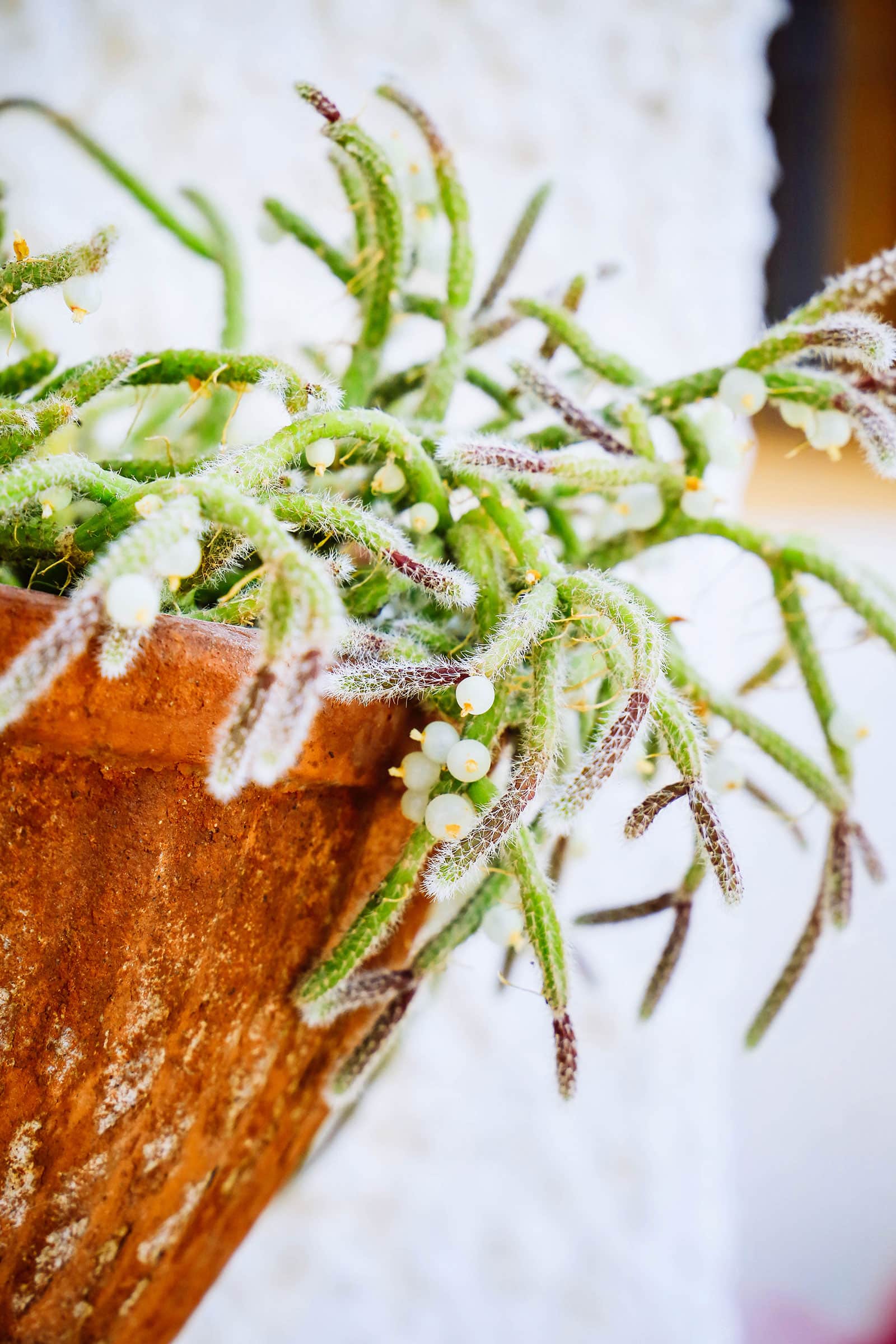
Caring for Rhipsalis
Light and temperature
Unlike desert cacti, which naturally tend to grow in areas without much in the way of tree cover and have evolved to love full sun as a result, Rhipsalis calls the forest its home.
Here, taller tree canopies block out some of the light, meaning this genus is a little less demanding when it comes to light levels in the home.
Although you should still place your Rhipsalis next to a window, it doesn’t have to be one that gets blasted with direct sun on the daily. Bright indirect light is okay. If you do give it a little more, your plant might develop red leaf tips, which some cactus growers prefer.
The minimum temperature for a Rhipsalis can vary by species, so if you’re planning on growing yours in a cooler spot in winter, be sure to check. In any case, temps between 50°F to 86°F should be fine for a mistletoe cactus.
Water and humidity
Jungle cacti like this one like a little more water than their desert counterparts, but that doesn’t mean they appreciate constantly wet feet. I can’t give you an exact watering schedule because a lot of it depends on factors like light and temperature, but here are some basic indications:
- During the warm summer growing months, you can water your Rhipsalis once the top inch or two of the soil has gone dry.
- In winter, it’s best to let the soil dry halfway or more before giving your plant another drink.
This plant isn’t overly fussy about humidity, although it does grow better if the air moisture level is 50 percent or more.
Soil and planting
Because Rhipsalis doesn’t deal well with being in constantly wet soil, it’s important to choose a well-draining medium. It doesn’t have to be quite as gritty as soil for desert cacti (which sometimes consists of only grit and no potting soil at all), but adding a handful of perlite and/or orchid bark really helps to prevent accidental overwatering.
When it comes to the right planter for your Rhipsalis, that mostly depends on your own preferences. As long as it has a drainage hole, you’re all good! A hanging planter is obviously a great choice for a “spiller” like this, but you can also keep it in a normal pot and let the stems creep over the edge of a shelf or cabinet.
Did you know?
As we discussed, the mistletoe cactus is naturally an epiphyte. Although it’s nearly always sold in a normal planter, its epiphytic nature means that technically, you could also mount it on wood. Some sphagnum moss should be helpful in keeping the roots moist enough.
Recommended products for Rhipsalis plant care:
- Leaves & Soul Premium Potting Soil for Orchids, Bromeliads, and Epiphytic Plants
- Espoma Organic Potting Mix for Orchids and Bromeliads
- Good Earth Organics Premium Potting Soil
- Perfect Plants Organic Perlite
- Better-Gro Orchid Bark
Fertilizing
Rhipsalis cacti aren’t heavy feeders. However, if yours is happily chugging along and growing well, and if it’s been a while since you last repotted it, you could consider applying a diluted liquid houseplant fertilizer on a monthly basis.
As always, don’t use fertilizer during winter or in an attempt to revive a dying plant. Unfortunately this only makes things worse!
Recommended fertilizers for Rhipsalis:
- Elm Dirt Plant Juice Organic Fertilizer
- The Grow Co. Succulent & Cactus Plant Food
- Cute Farms Cacti, Succulent & Aloe Fertilizer (Liquid Pump Bottle)
Pruning
This cactus generally doesn’t need much in terms of pruning. You can remove any dead or dying stems or cut a few to clean up the look of your plant, if you so desire.
Pruning can also help encourage the stems to branch out a bit, so if your plant is looking particularly sparse, you can cut a few and stick them back in the soil with the mother plant to give her a fuller look.
Dividing or repotting
If your Rhipsalis is starting to outgrow its planter, you’ve got two options. Either you repot the whole thing, or you split the plant and place part of it in a different planter.
I personally prefer the former; there’s just something about a huge, bushy and mature Rhipsalis plant with long, flowy stems!
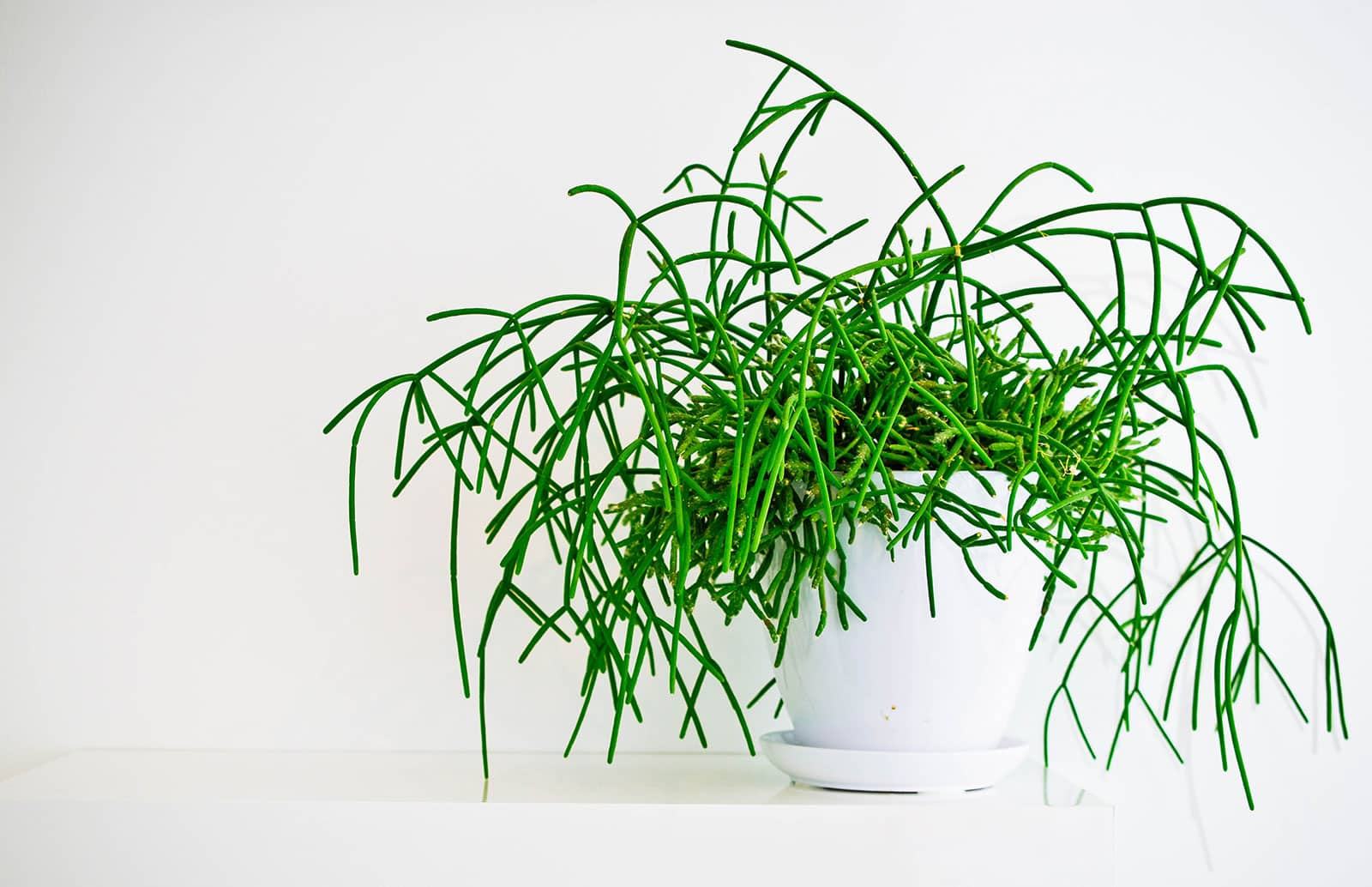
Propagating Rhipsalis
Propagating a houseplant really doesn’t get much easier than with a Rhipsalis. Thanks to their segmented stems and ability to sprout roots from pretty much anywhere, multiplying them is a breeze.
You can take cuttings from a Rhipsalis by snapping off a section at any leaf connection point. The larger the cutting, the better: very small ones consisting of one or two thin stems may shrivel before they can root. Larger cuttings that include at least a couple of stems have enough water stored to last them until their root system has developed.
You can propagate a Rhipsalis plant in water, but it’s easiest to just skip the extra step and pop your cutting straight into soil. Lightly moisten the soil once every other day or so (like with a spray bottle) and it should root in no time.
If you’re not sure whether your cutting has rooted yet, you can give it a slight tug. If you feel any resistance, you’re in the clear! New growth on the cutting is also a sure sign that it has managed to successfully establish itself. Once it roots, you have a brand new Rhipsalis to keep or give away.
Did you know?
You can actually grow a mistletoe cactus from seed as well. If yours produces berries, give it a shot!
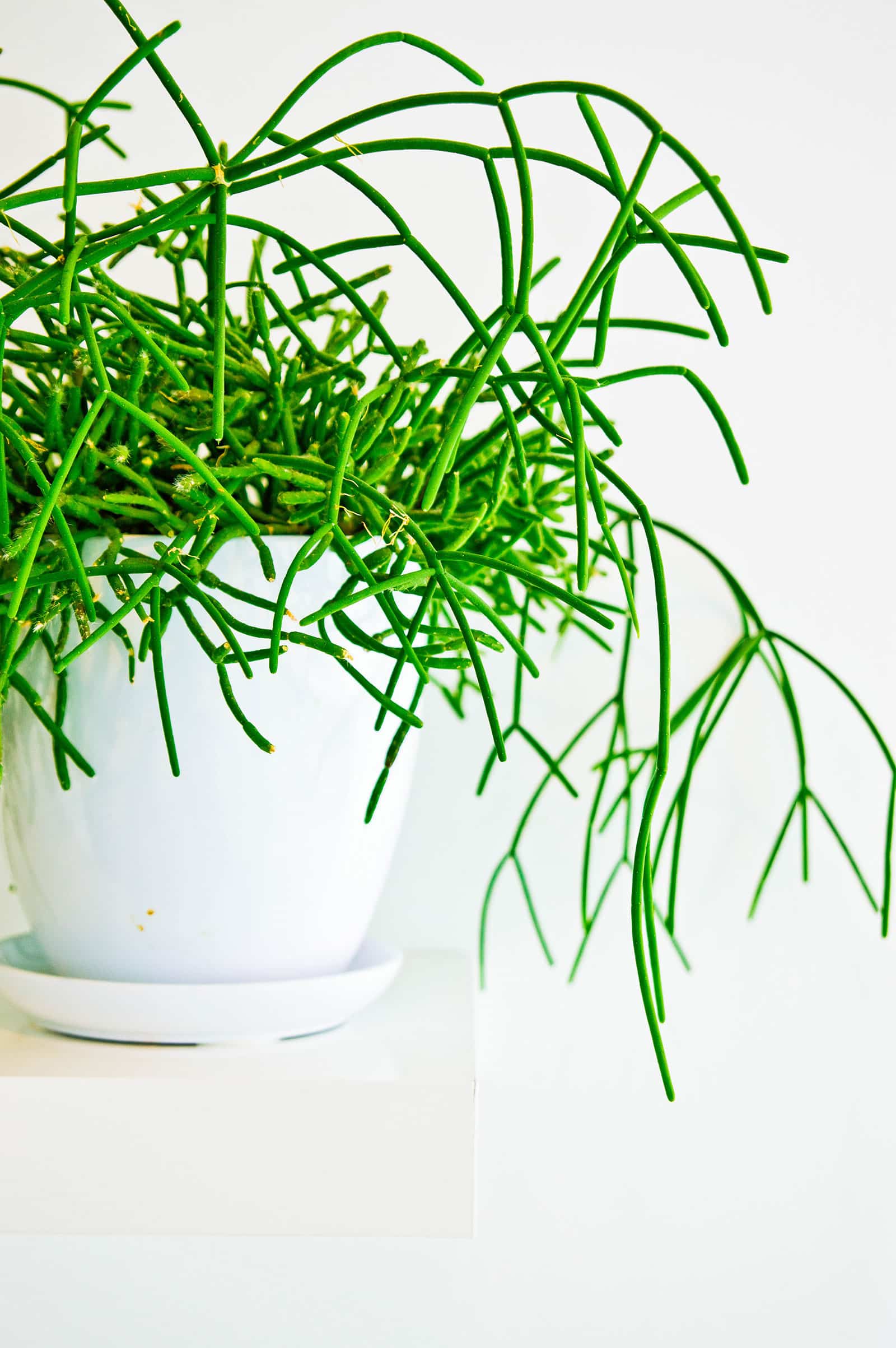
Is Rhipsalis toxic to cats and dogs?
There are various sources that list Rhipsalis cacti as toxic. The good news? It’s not actually true!
I’m not sure where the confusion started; it may have something to do with the fact that one of its common names is ‘coral cactus’, which is also used for a Euphorbia species that actually is toxic. Anyway, if your pet or child takes a bite out of your Rhipsalis, there’s no reason to worry.
Do keep in mind that cats in particular find those long dangling stems very hard to resist, and the entire planter can come tumbling down if they get snagged. If you have a cat, it’s best to place your Rhipsalis somewhere it can’t reach.

Sources:
https://www.iucnredlist.org/species/152365/628721
https://www.iucnredlist.org/species/152443/637316
Brito, R. G., Santos, R. L., Guimarães, G. P., Ponciano, T. N., Dantas, I. C., & Felismino, D. C. (2011). Ornamental toxic plant species sold in Campina Grande’s market, Paraíba, Brazil. In Poisoning by plants, mycotoxins and related toxins (pp. 101-104). Wallingford UK: CABI.
Cota-Sánchez, J. H., & Bomfim-Patrício, M. C. (2010). Seed morphology, polyploidy and the evolutionary history of the epiphytic cactus Rhipsalis baccifera (Cactaceae). Polibotánica, (29), 107-129.
Zampini, I. C., Ordóñez, R., Giannini, N. P., Blendinger, P. G., & Isla, M. I. (2011). Nutraceutical properties and toxicity studies of fruits from four Cactaceae species grown in Argentine Northwestern. Food research international, 44(7), 2345-2351.


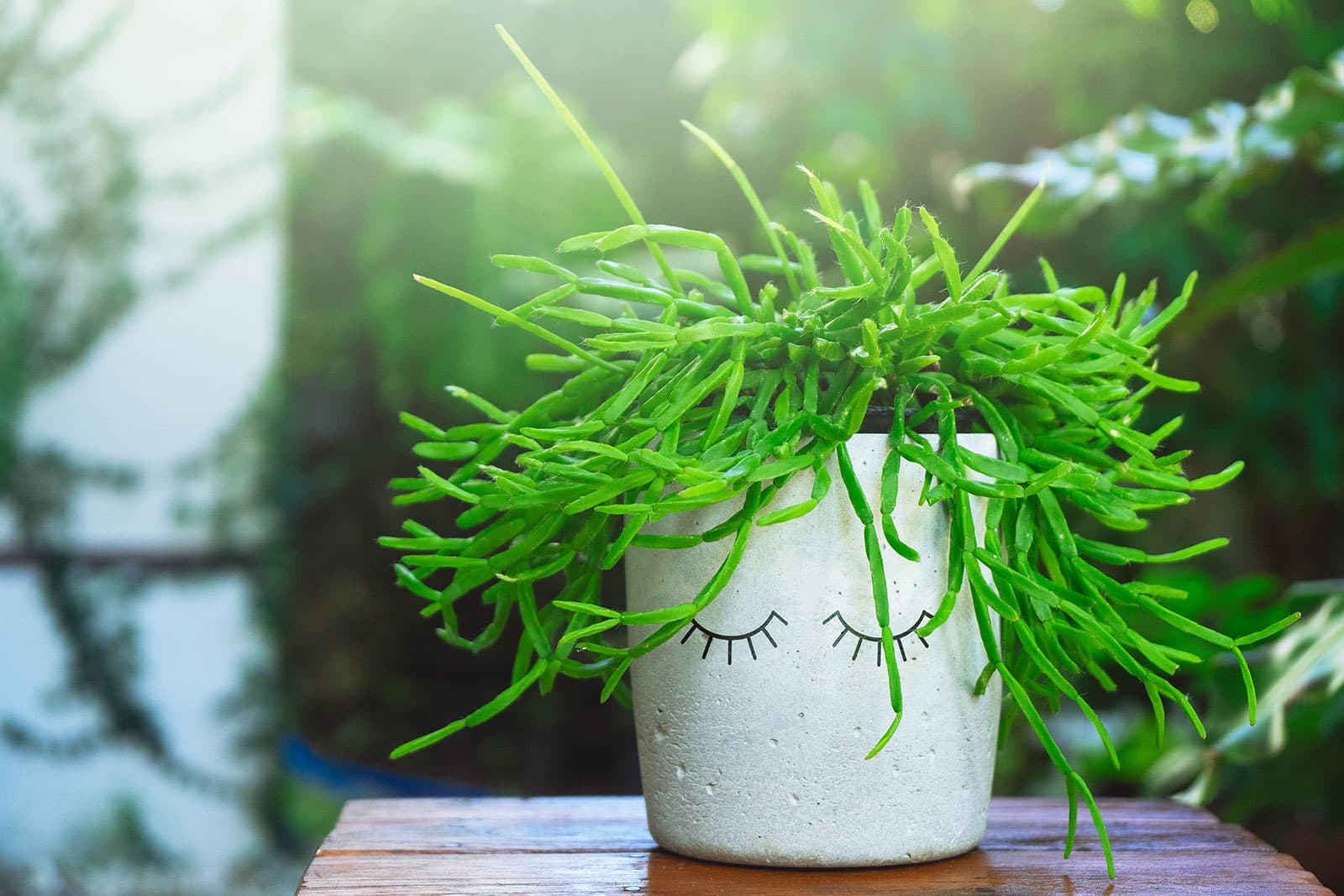













Thanks for the ideas you are discussing on this blog. Another thing I’d really like to say is that getting hold of some copies of your credit file in order to check out accuracy of the detail is the first motion you have to undertake in fixing credit. You are looking to thoroughly clean your credit history from destructive details problems that wreck your credit score.
I have realized that over the course of building a relationship with real estate owners, you’ll be able to come to understand that, in most real estate transaction, a commission is paid. All things considered, FSBO sellers will not “save” the commission. Rather, they fight to win the commission through doing a strong agent’s work. In this, they shell out their money along with time to conduct, as best they could, the assignments of an realtor. Those responsibilities include displaying the home via marketing, delivering the home to willing buyers, developing a sense of buyer desperation in order to prompt an offer, preparing home inspections, managing qualification inspections with the mortgage lender, supervising maintenance tasks, and aiding the closing of the deal.